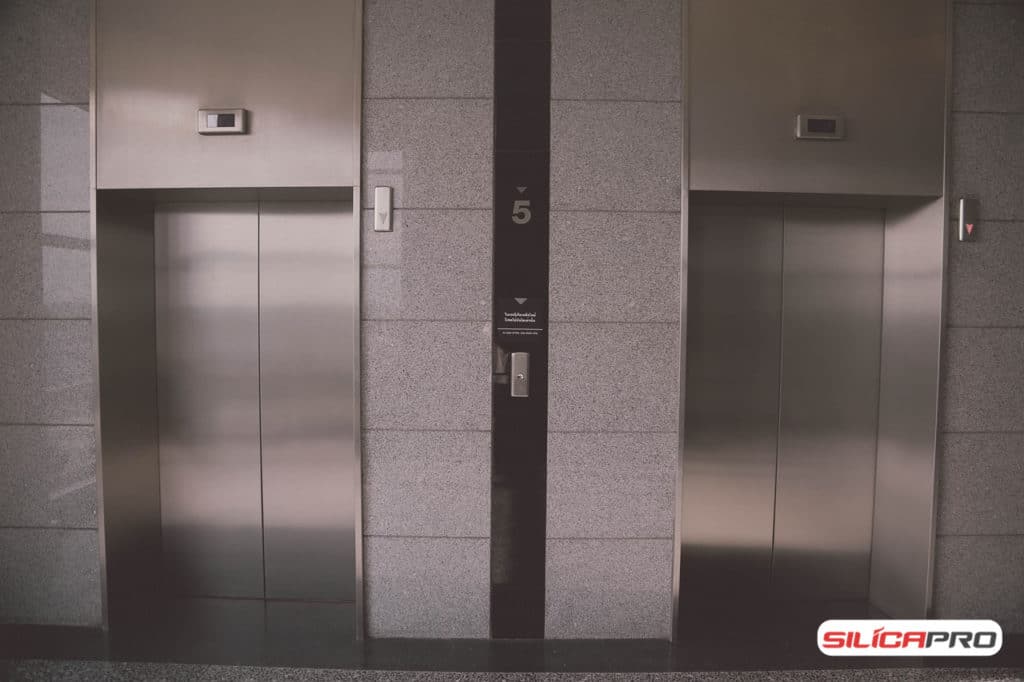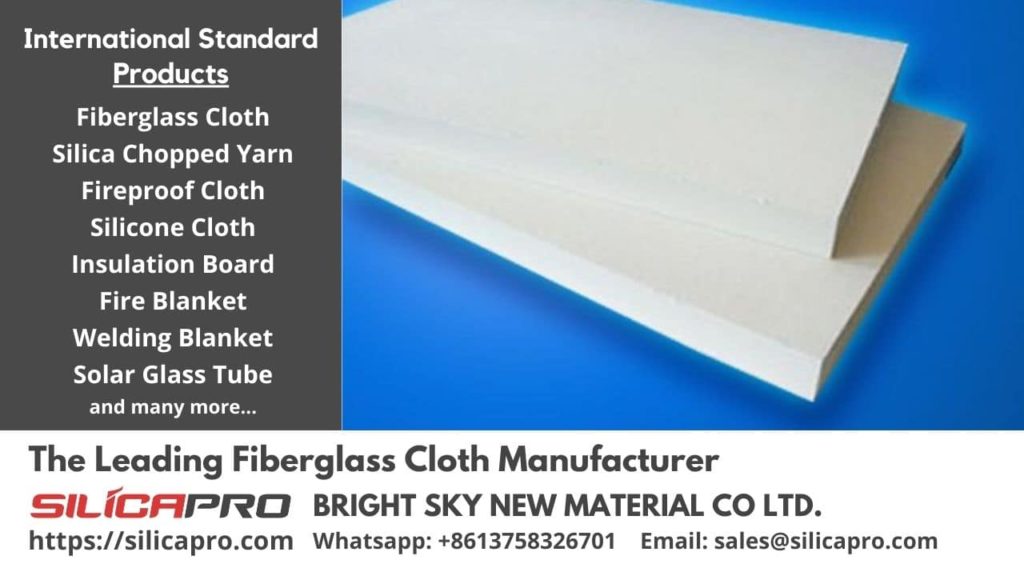
Contents
- 1 Introduction
- 2 The Critical Role of Fire-Resistant Elevator Doors
- 3 Requirements of domestic and foreign standards for elevator fire insulation doors
- 4 1. Single fire resistance index fire resistance performance grade of fire-resistant elevator doors
- 5 2. Mixed fire resistance index of fire-resistant elevator doors, Fire resistance performance grade
- 6 3. Advantages of Tianyi nano microporous high silicon oxide board applied in fire-resistant elevator doors system
Introduction
Effectively containing serious fires in building design is a complex technical challenge. In high-rise fires, it’s crucial not only to limit the fire to a small area but also to prevent it from spreading to other floors. This brings us to the importance of fire-resistant elevator doors.
The Critical Role of Fire-Resistant Elevator Doors
In a fire, elevator shafts act as natural chimneys. The “chimney effect” in high-rises contributes significantly to the destructive force of fires. When a fire breaks out, these shafts can accelerate the fire’s spread in various ways and speeds. By suppressing the chimney effect in elevator shafts, we can prevent or delay fire spread, buying precious time for trapped individuals to escape and firefighters to save lives.
Fire-resistant insulation doors in elevators serve this purpose. Essentially, this involves installing “insulated fireproof doors” in elevators. If high-rise buildings install such doors in elevator lobbies, they can significantly delay fire spread through the shaft during a fire. This isolation from fire, heat, and smoke maximizes safety for trapped individuals, buying escape time and saving lives. Hence, fire-resistant elevator doors are crucial for protecting lives and preventing fire spread.
Requirements of domestic and foreign standards for elevator fire insulation doors
Fire involves combustible substances reacting with oxygen to produce flame, heat, and smoke. For fire protection, we must guard against all three. Globally, building components like door testing must meet these fire protection requirements, with similar testing principles and criteria. Initially, testers clamp the product in a special furnace, then expose it to a controlled fire for a set time. They primarily evaluate the product’s thermal insulation performance and integrity based on specific criteria.
Europe
In Europe, fire-resistant elevator door tests mainly follow DIN 1363-1 and DIN EN 1364-1 standards for non-load-bearing building components, aligning with the EN 81-58:2003 standard from January 2004.
USA and Canada
In the United States and Canada, the standard is E2226. Products passing fire resistance tests may also undergo a standard fire hose water flow test to simulate real building fire conditions.
China
China’s Ministry of Public Security and Ministry of Housing and Urban-Rural Development implemented the GB50015-2015 “Code for Fire Protection Design of Buildings” on May 1, 2015. Section 6.2.9 mandates that elevator floor fire resistance must be at least 1.00 h and meet integrity and thermal insulation standards of GB/T 27903. Falling short in fire control review means disqualification. This standard, a Class B technical standard, plays a crucial role in the design and production of elevator landing doors, enhancing their quality and ensuring the safety of firefighters and people in distress.
This standard categorizes elevator landing door fire resistance into four grades: 30min, 60min, 90min, and 120min. It shows single index classification in Table 1 and mixed index classification in Table 2.
Fire Resistance Ratings
The meaning of fire resistance rating is as follows:
- Ett: graded according to the requirements of the integrity index, and the fire resistance time is tt min;
- I tt: classify according to the requirements of thermal insulation index, and the fire resistance time is tt min;
- W tt: classify according to the requirements of heat flux index, and the fire resistance time is tt min;
- EI tt: graded according to the requirements of both integrity index and thermal insulation index, and the fire resistance time is tt min;
- EW tt: graded according to the requirements of both integrity index and heat flux index, and the fire resistance time is tt min;

1. Single fire resistance index fire resistance performance grade of fire-resistant elevator doors
| Grading method | Fire resistance rating | |||
| Meet the requirements of integrity indicators | E 30 | E 60 | E 90 | E 120 |
| Meet the requirements of thermal insulation index | I 30 | I 60 | I 90 | I 120 |
| Meet the requirements of heat flux index | W 30 | W 60 | W 90 | W 120 |
2. Mixed fire resistance index of fire-resistant elevator doors, Fire resistance performance grade
| Grading method | Fire resistance rating | |||
| Meet the requirements of integrity index and thermal insulation index | EI 30 | EI 60 | EI 90 | EI 120 |
| Meet the requirements of integrity index and heat flux index | EW 30 | EW 60 | EW 90 | EW 120 |
See relevant standards for specific judgment of fire resistance.
3. Advantages of Tianyi nano microporous high silicon oxide board applied in fire-resistant elevator doors system
HT-1000 and MT-800 high silicon oxide boards developed by Bright Sky New Materials (Jiaxing) Co., Ltd. are the ideal materials for passive fire protection of high-resistance elevator doors. It has the following advantages when applied to elevator fire insulation doors and can fully meet relevant national standards:
Incombustible
It is incombustible, does not contain any combustible components, and will not decompose any substances harmful to the human body or the environment in the process of fire combustion. It is a green, environmentally safe thermal insulation material.
Heat Insulation
Good Integrity
The high silicon oxide plate exhibits excellent integrity. It possesses inherent strength and is encased in non-combustible glass fiber cloth, ensuring product cleanliness and dust-free operation. During normal elevator usage, the materials maintain their intactness. In the event of a fire, when the elevator door faces high temperatures, the glass fiber covering may become brittle, shrink, or even melt. However, the core material’s integrity and thermal insulation properties remain unaffected.
High Performance Index
Tianyi Company’s high silicon oxide plate fully meets foreign product standards in performance. It also boasts an excellent cost-performance ratio, thanks to domestic equipment, raw materials, and market positioning. This opens opportunities for this material’s widespread use. The plate is light and thin, offering the same thermal insulation as traditional materials at just 1/4-1/6 of their thickness. When the flame temperature reaches 1160°C and the plate’s thickness is 25mm, the backfire surface temperature stays at 128°C, with a heat flux of 1643W/m2. This is significantly below the national standard of 140°C and less than 15000W/m2 heat flux.
Thus, fire and heat insulation thickness in fire-resistant elevator doors can match that of standard elevator landing doors, greatly aiding designers. To achieve a 140°C cold surface temperature, ceramic fiber insulation (the landing door’s thickness) must exceed 100mm.

